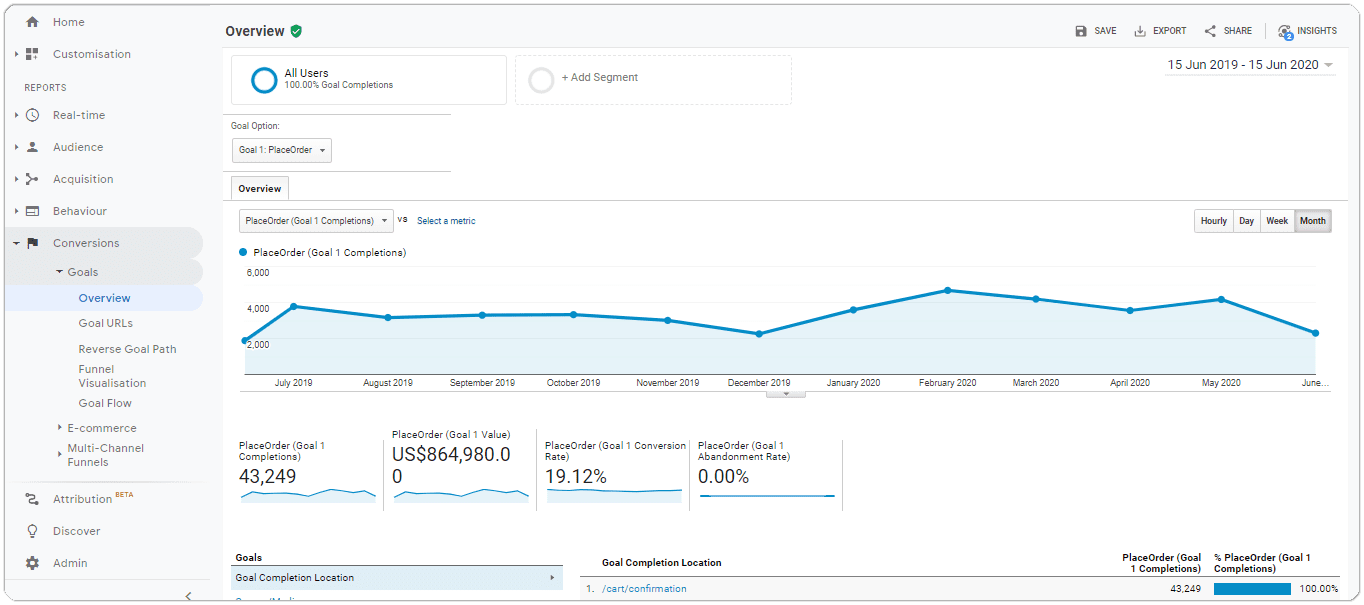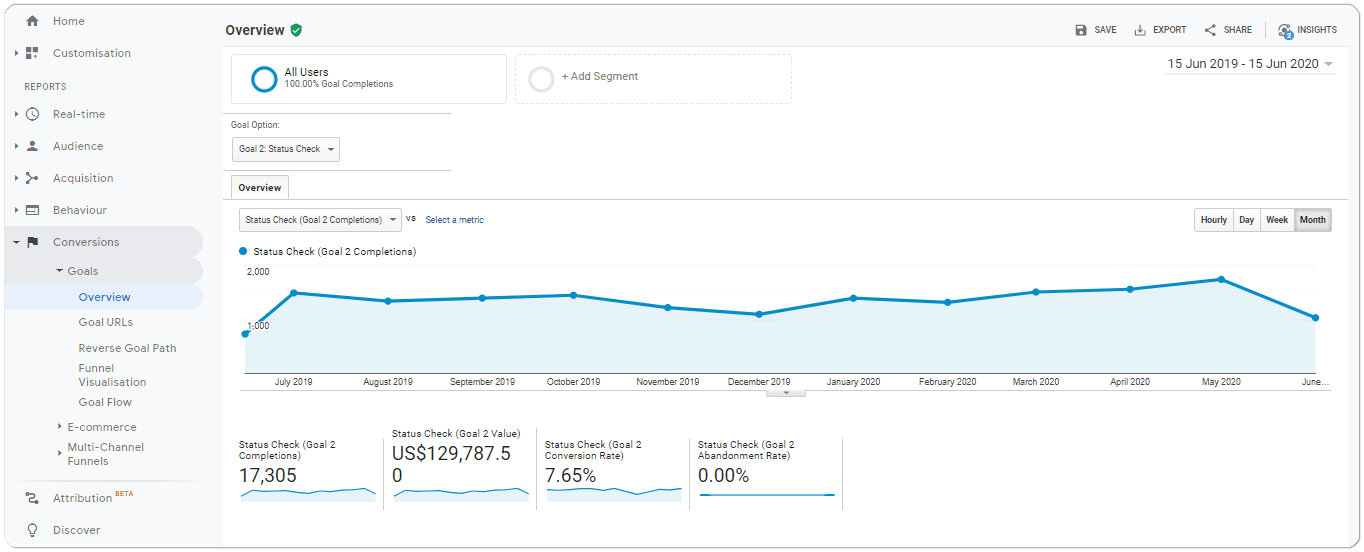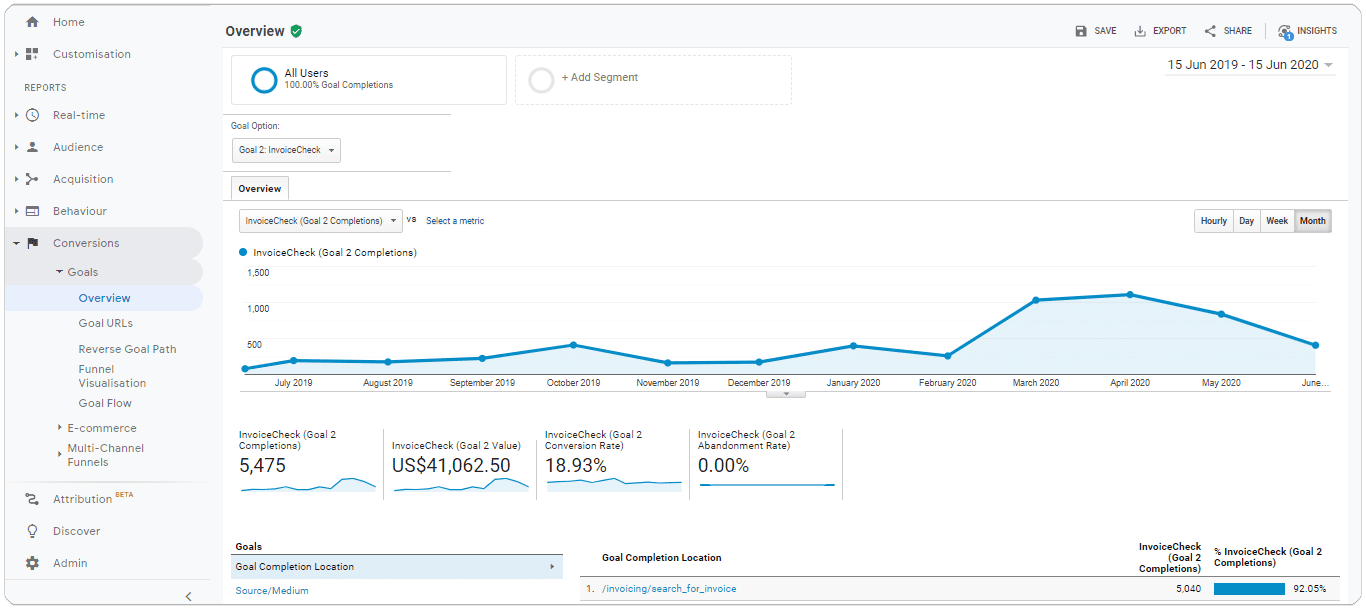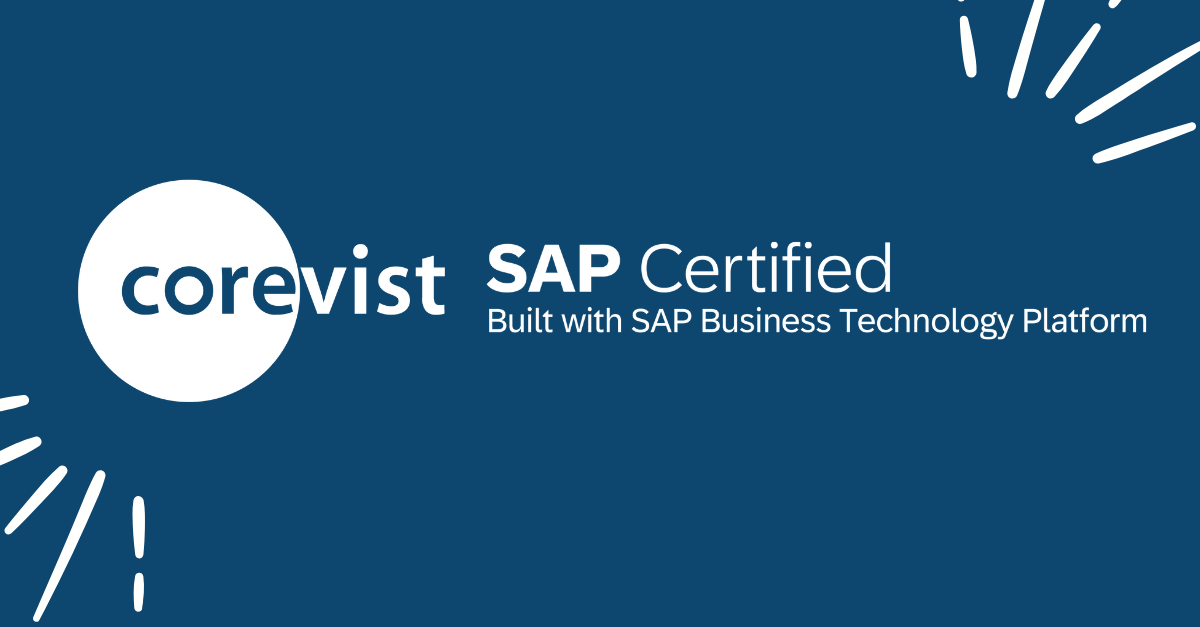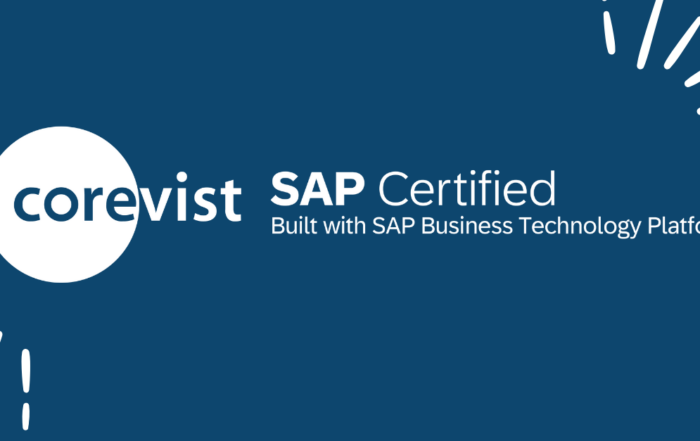Share
Author
George Anderson
Share
Measuring B2B eCommerce Efficiency Gains
At Corevist, our mission is to make B2B eCommerce accessible to all manufacturers running SAP ERP. A key part of that accessibility is helping manufacturers understand how to measure the things that matter—i.e. the metrics that support their B2B eCommerce goals.
In a previous post, we covered metrics for growth-oriented B2B eCommerce. But not every manufacturer launches a web channel to grow revenue. For some companies, the goal may be to increase the efficiency of order processing.
In this post, we’ll give you key metrics to track the health of a B2B web channel when your goal is to increase efficiency. These are the metrics which most Corevist clients use in Google Analytics to track their cost savings.
1. Self-service orders placed
What it is: This goal is recorded every time a customer places an order.
Typical cost savings assigned per goal completion: $10 – $50
Where to find it in Google Analytics: Conversions > Goals > Goal Overview > Goal Option: PlaceOrder
Our clients assign variable savings values to this goal. Those with more complex ordering processes require more time from a CSR (Customer Service rep) to complete an order, including any back-and-forth with the customer. Manufacturers with complex ordering processes tend to assign this goal a much higher value.
At the other end of the spectrum, some Corevist clients have simpler ordering processes. For these clients, it doesn’t take more than a few minutes for a CSR to rekey an order into SAP. These clients assign a lower cost savings value to customer self-service order entry.
Either way, the value of your Place Order goals is a critical metric for increasing efficiency in order processing.
The key here is real-time integration to SAP ERP—including order simulation with intelligent error messaging which tells customers how to fix an order before placing it. You’ve only achieved self-service ordering when every order conforms 100% to the relevant business rules in SAP. That’s why SAP integration in your B2B portal is critical to increasing your efficiency in order processing.
2. Self-service order status lookups
What it is: This goal is recorded every time a customer looks up an order to check order status, line item status, shipment tracking, etc.
Typical cost savings assigned per goal completion: $7.00 – $7.50
Where to find it in Google Analytics: Conversions > Goals > Goal Overview > Goal Option: Status Check
While a single order status lookup doesn’t take too much time for a CSR, that cost adds up quickly at scale. In fact, routine status checks are one of the biggest opportunities for manufacturers to make strides in efficiency.
The key here is integration to SAP ERP. Without real-time data from SAP, an order tracking portal can’t really replace phone calls to Customer Service. If the portal is going to increase operational efficiency by reducing those inquiries, it must provide real-time SAP data.
This is why Corevist’s Order Tracking module pulls order data from SAP in real time. (The solution is available separately or as part of the Corevist Commerce suite.) Customers can get 100% accurate, up-to-date information about their orders without picking up the phone (or writing an email).
3. Self-service invoice lookups
What it is: This goal is recorded every time a customer looks up an invoice or list of invoices.
Typical cost savings assigned per goal completion: $7.00 – $7.50
Where to find it in Google Analytics: Conversions > Goals > Goal Overview > Goal Option: eInvoice (or InvoiceCheck)
If you’re going to give customers the option to check orders through self-service, it makes sense to give them access to invoice data, too. That way, they can check invoice status and history on their own—without calling Customer Service.
Here, too, real-time SAP integration is essential. If the B2B portal is really going to replace routine Customer Service inquiries, it needs to provide 100% accurate, up-to-date data on invoices and account standing. This is why Corevist Commerce, Order Tracking, and Bill Pay all include real-time invoice history and standing, as well as real-time credit status—plus the option to add electronic payments, too.
The Takeaway: Choose the right metrics to measure your efficiency gains
At Corevist, we recommend these 3 metrics to measure efficiency because they’re tied to concrete actions taken by customers. With the right goal value assigned (based on average cost per action at your organization), these 3 metrics give you quantitative estimates of your cost savings. Used in tandem with your actual cost-to-serve from your company financials, these metrics can help you refine your efficiency model and build a leaner organization.
Moving forward: FREE case study
Want to see increased operational efficiency in real life? Download this case study on Blount International. You’ll learn how this leading manufacturer of forestry equipment launched Corevist Order Tracking, then grew the portal to our full suite, Corevist Commerce, and saw 325% digital revenue gains.
[want_more title=”Learn more” subtitle=”FREE Case study: Blount International” description=”Learn how multiple departments came together as Blount International launched ecommerce.” button_text=”Download Now” button_link=”https://www.corevist.com/blount-international-inc/” button_class=”btn btn-primary blount-case-study” title2=”See it for yourself” subtitle2=”Talk to us” description2=”Curious what Corevist Commerce can do for you? Let us show you a personalized demo. You’ll see ecommerce with real-time SAP data.” button_text2=”Schedule Demo” button_link2=”https://www.corevist.com/demo/” button_class2=”demo-popup”]


